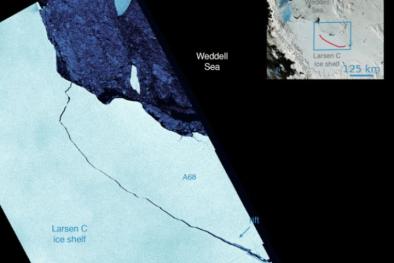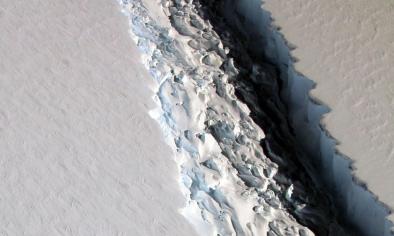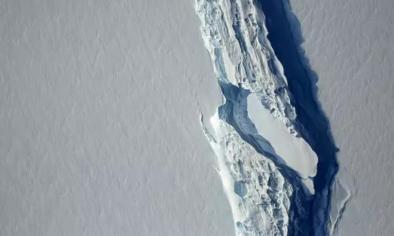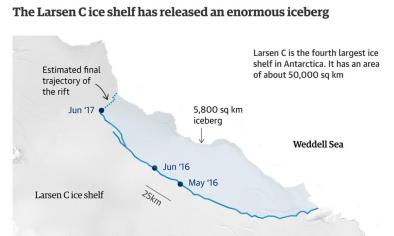Science Source
Impacts of the Larsen-C Ice Shelf calving event
- States that:
- Loss of ice shelf mass can reduce the backward pressure blocking the downward flow of ice from the interior
- On the Antarctic Peninsula, ice shelf thinning or collapsing events have caused up to an eight-fold speed-up in the rate of ice flow, increasing the ice-sheet contribution to global sea-level rise
- States that:
- Ice rises (isolated high-elevation topographic features overridden by the ice-shelf, e.g. small islands that serve as pinning points) provide additional buttressing support for floating ice-shelves
- An ice shelf's loss of contact with an ice rise can prompt a significant acceleration in ice speed and possibly further destabilization of the ice front
- Warns that if iceberg calving events unground the Larsen-C ice shelf from the Bawden ice rise, the remaining shelf will be much less stable
- Notes that regardless, this is an opportunity for glaciologists to test their ideas about how ice shelves affect ice flow
- Notes that it is not clear what physical mechanism drives ice-shelf disintegration, meaning a direct link to global climate change cannot be established, and so model predictions of the pace and onset of future collapse events are less reliable
Related Content
Headline

Jul 13, 2017 | Mashable
The 7 best views of the Larsen C iceberg breaking off Antarctica
Headline

Jul 12, 2017 | Mashable
One of the largest icebergs ever recorded just broke free of Antarctica
Headline

Jul 12, 2017 | USA Today
An Antarctic iceberg nearly the size of Delaware — one of the largest on record — has broken off
Headline

Jul 12, 2017 | The Guardian
Iceberg twice size of Luxembourg breaks off Antarctic ice shelf


